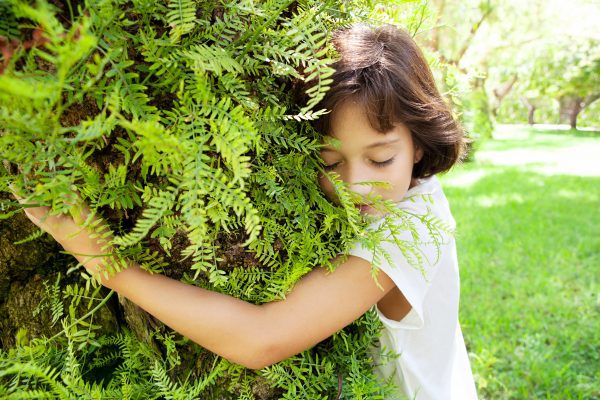
This post was contributed by Elizabeth Pinsky, MD, a pediatrician and child psychiatrist at Massachusetts General Hospital for Children. She is passionate about the impact of climate change on children’s physical and mental health.
Alexander was six years old when he stared glumly down at his dinner and said, “If we eat up all the animals, they’ll be gone and the earth will die.” His surprised mother reassured him that the chicken on his plate wouldn’t use up all the animals, and farmers could make more. “I know that,” Alexander replied, a little annoyed, “But haven’t you heard about global warming?!”
Climate change, sometimes called “global warming,” is a big topic. Families around the world are already experiencing consequences, including severe weather, wildfires, and loss of land. Even children who have not experienced dramatic effects of climate change, like Alexander, learn about climate change through the media and may struggle to cope with their worries. Increasing numbers of adolescents describe “eco-anxiety” about what the future holds.
Because climate change is such an enormous problem, and so complicated, many grownups choose not to think about it. When grownups feel uncertain about something, it is harder to broach that challenging topic with children – and when parents won’t talk about something, kids worry more.
Talking to Kids About Climate Change
Like all important topics relevant to your family’s beliefs and values, children should get their information about climate change from a trusted adult (and not just the media or friends). The choices families make, like the foods they eat, how they travel and what and how much they purchase, can make a difference. Helping kids to understand the impact of family choices can give them a sense of empowerment. Family dinner is an ideal place to start the conversation, beginning with the foods on our plates and the buying choices we make.
Assess What Kids Already Know
Older children may already have a lot of information and opinions about climate change – perhaps more than their parents! For younger children, knowing when is the right time to talk about climate change means listening for cues that a child has questions, and seizing opportunities to start discussions.
Any time you begin conversations with children about difficult topics, the best place to start is assessing what they already know. This information helps adults guide the conversation, and know how much information to share. Helpful questions might include:
- What have you heard about climate change?
- Why do you ask about that?
- What do you know already?
- Where did you get your information?
Give the Basic Facts
You don’t need to be a climate scientist to share information about climate change with your child, but planning what to say can help. A script for an elementary school-aged child might include an explanation like:
“Human beings are burning lots of fossil fuels, like oil and gas. We burn fossil fuels to power our cars and airplanes, to make electricity, and to heat our homes. Burning fossil fuels creates greenhouse gases. Greenhouse gases wrap around the planet like a blanket, and make our climate hotter, wetter, and less predictable. This is causing problems for animals and people. It’s a big problem, but there are smart people working hard to find solutions, and there are things we can do as a family to help.”
Talk About Making a Difference and Take Action
The best way to cope with anxiety about our changing world is to take positive action. Any discussion about climate change for children should lead directly to a discussion about how they can make a difference – including concrete actions right at the dinner table. Here are some suggestions:
- Reduce food waste. One third of the food generated worldwide is never eaten. This squanders resources, and contributes to greenhouse gases as food decomposes in landfills. Project Drawdown rates minimizing food waste as a top solution to climate change; families can help by reducing the food they don’t eat, and by composting what waste they do generate.
- Eat a plant-forward diet. Plant-based diets, with more grains, legumes, fruits, and vegetables, and fewer dairy and meat products – especially beef — are healthier for us and for the planet.
- Understand your “carbon footprint.” A family’s decisions about travel, purchasing, energy sources, and daily routines impact the environment. Many “carbon footprint” calculators are available online, and working on a calculator together can spark discussion with older children and identify areas where your family can make changes.
- Encourage young activists. Individual action is important, but the greatest contributors to climate change are larger systems. These include the industries that produce the overwhelming majority of greenhouse gas emissions, and government policies that make low-impact living challenging. Youth activists have become leaders, demanding urgent change and inspiring adults worldwide. Support the youth activist already at your dinner table, or help nurture a budding activist by modelling climate advocacy: call your elected officials, join a local climate action group, and choose to be a climate voter.
For More Help:
Ways to care for the earth at dinner
Sierra Club: So Your Kids Are Stressed Out About the Climate Crisis
Cool Climate Carbon Footprint Calculator
